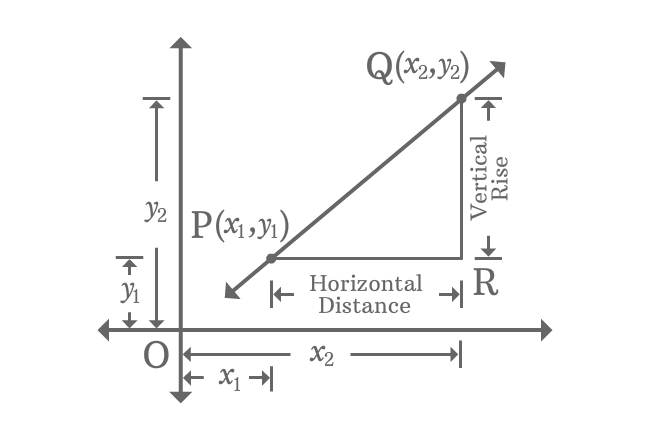Slope of a Straight Line in coordinates form
Equation
$m \,=\, \dfrac{y_{2}-y_{1}}{x_{2}-x_{1}}$
The ratio between differences of ordinates and abscissae of any two points on a line is called slope of a straight line.
Introduction
$\overleftrightarrow{PQ}$ is a straight line with some inclination in Cartesian coordinate system.

The coordinates of $P$ and $Q$ are $(x_{1}, y_{1})$ and $(x_{2}, y_{2})$. Draw a parallel line to horizontal axis from point $P$ and also draw a perpendicular line to same axis from point $Q$. The two lines are intersected at point $R$.
The length of $\overline{QR}$ represents vertical rise of the points $P$ and $Q$ and the length of $\overline{PR}$ represents the horizontal distance between them. The ration between them is called gradient of the straight line and it is denoted by letter $m$.
$m \,=\, \dfrac{Vertical \, Rise}{Horizontal \, Distance}$
$\implies m \,=\, \dfrac{QR}{PR}$
$\implies m \,=\, \dfrac{OQ-OR}{OR-OP}$
$\,\,\, \therefore \,\,\,\,\,\, m \,=\, \dfrac{y_{2}-y_{1}}{x_{2}-x_{1}}$
In this example, $x_{1}$ and $x_{2}$ are called abscissae and $y_{1}$ and $y_{2}$ are called ordinates geometrically.
It is proved that the slope of a straight line in terms of a coordinates is the ratio of differences of ordinates and abscissae of any two points on a line.
